THE SMOKE WE BREATHE is a soft white orchid with seductive petals. It’s an orange fritillary butterfly with mosaic wings and blue eyes. And it is the alarm calls of a sandpiper perched atop a spruce.
Borne from the fires in Canada, the smoke we breathe is of a land so vast and wide that while gazing across its terrain I can sense the curvature of Earth. To help bring clarity to our air, I give you life from the burning land: photographs and recollections from my own expedition a year ago to where the fires now burn near Hudson Bay in Quebec.
Wildlife is by no means this land’s only gifts. For many of us here in the northeastern United States, the smoke we breathe comes from the same place sending us electricity captured from its wild rivers. Even as the hydropower (transmitted south by the provincial utility Hydro-Quebec) helps curb the climate disaster, the smoke reminds us of our climate urgency.
On this particular trip I journeyed 1,000 miles north from my home in Vermont to Radisson, Quebec. Along the way and beyond, where there were either Cree villages and settlements or no people at all, I sought from the vast land its little things — mostly butterflies and dragonflies whose common names included “arctic” and “muskeg” and “boreal.”
For two weeks, mostly in bogs each day, my two friends and I lived with wet feet and a personal cloud of blackflies. In the triumvirate of northern biting insects, blackflies are the least pernicious if you ask me. They’re like an overloaded email inbox — always there, often annoying, but not much threat to your well-being. By contrast, mosquitoes are at times ominous, like viruses. And the deerfly is thuggish, painful, like a mugger.
Yet I would bear far worse to be among those bogs. After all, in so many of them flies the Bog Fritillary (Boloria eunomia). We were never far from this orange butterfly’s gentle flaps and glides and poses. In total, we encountered five different species of these “lesser fritillaries” in the genus Boloria, best distinguished by the patterns on the underside of their hind wings, a few examples of which I’ve included for you below. And yet, as you’ll also see, not all that flies is so boldly marked. Among butterflies, sometimes it pays to resemble rock or lichen.

Butterflies like these are now burning in the fires of Quebec and elsewhere across Canada. Although some of them might escape the flames, plants of course have no such recourse. To be sure, fire is a natural event in this habitat, but historically more so in western Canada than in the eastern provinces. And while we can’t be sure that the warming climate is a factor this particular fire season, researchers suggest that drier and hotter conditions will indeed bring more frequent and intense fires to the eastern provinces.
It means that into this summer, and in years to come, more Americans will be breathing the smoke of orchids and saxifrages and laurels from farther north. Again, fire isn’t necessarily evil here; flowers burn wherever its goes. But the climate crisis is drying forests and all but setting a match to them — and to plants like these.
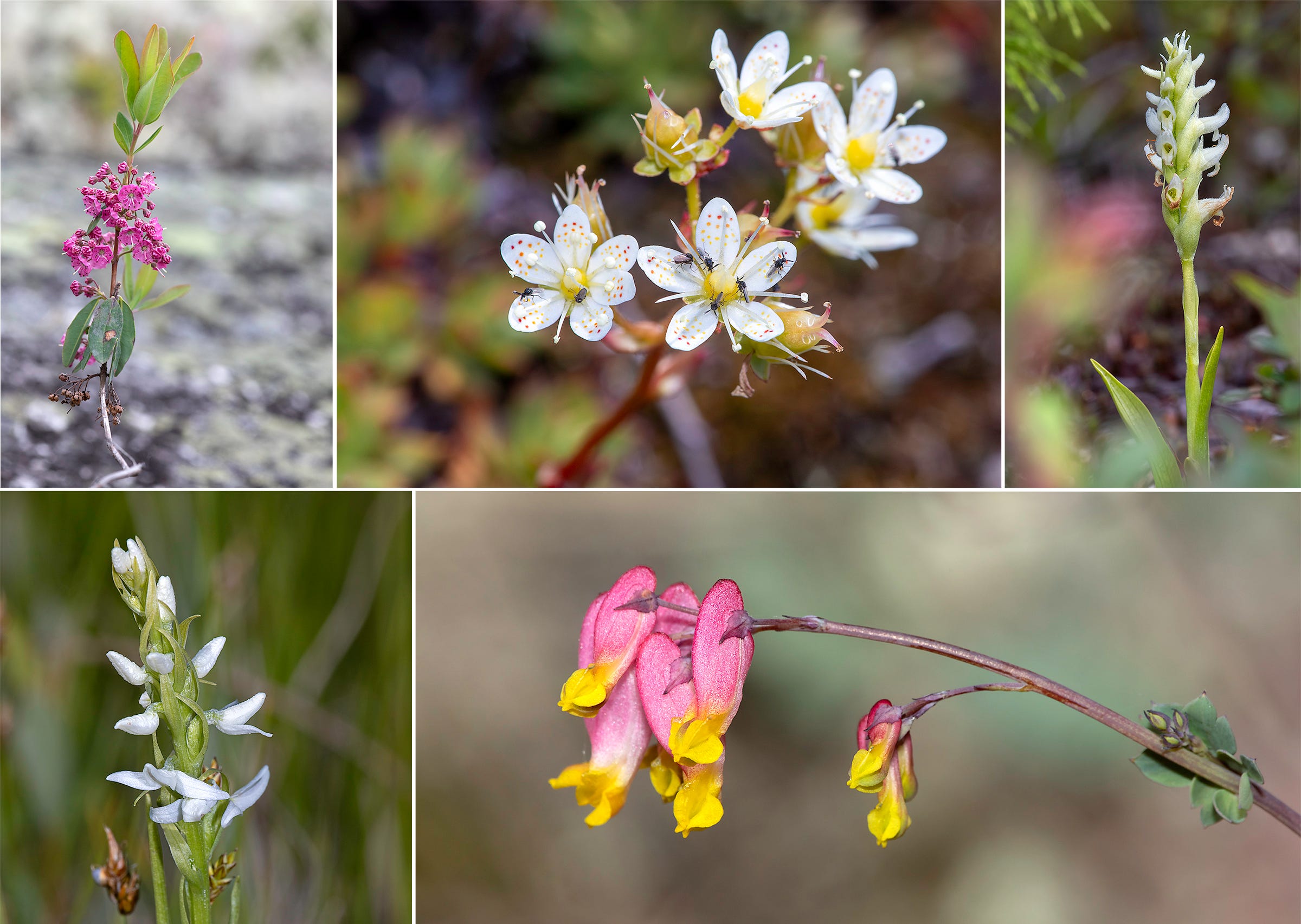
In his Substack
, points out that the smoke many of us are breathing is not unlike dirty air inhaled every day by people around the world, except theirs comes from the burning of fossil fuels.“In fact, we should probably—in our hearts if not our lungs—be grateful for a few days like this,” he writes in a dispatch called We Can See Clearly Now. “They bring us much much closer to the lived experience of billions of our brothers and sisters.”
In this dispatch of mine, I do not bring us closer to those billions, including the Cree people of James Bay whose lives have variably been ruined, disrupted or enhanced by the development of massive hydroelectric power generation across their lands.
I am ill-qualified to bring you a fully informed opinion on the power play for land and water, affecting Cree hunting and fishing grounds and raging for a half century in Quebec — and that will likely continue. I only bring you closer to flowers, little flying things and a big landscape on fire — a place that otherwise might be dismissed as an abstraction of moose and mosquitos and spruce trees.
From the Niger Delta to the Middle East to the fracking lands of Pennsylvania, people and places invariably suffer so that we have the crude and fuels that run our lives. Whether it’s from burning forests or smoldering battlefields, or even places where there is no fire at all, on a warming and shrinking planet, no matter where we are, the smoke we breathe is the air we breathe.
Postscripts
I bring you extras from James Bay: a gaudy moth laying pearly eggs, hot orange-red-and-yellow, polka-dotted flower petals, and dragonflies with eyes that glow like emeralds.
And from the frontiers of my discovering, after 21 years of searching, an imperiled Bog Elfin butterfly here in Vermont, I bring you my 15 minutes of fame: an article about me beside one about Vladimir Putin on the front page of a major U.S. newspaper.
NOW FLYING where the woods burn is this bold statement in brown and orange — St. Lawrence Tiger Moth (Arctia parthenos). Find it across much of northern North America this time of year. I’ll admit that none of these images is entirely “wild.” The two in the outer shots visited my moth sheet and the deck railing at our research station, drawn there by a UV sampling light. That middle shot, from Maine, came after a similar night of moth sampling when I gently placed a female on a leaf and she began to lay eggs. All moths and eggs were subsequently returned to the wild.
MARKINGS ON FLOWER PETALS are generally about procreation: for attracting insect pollinators. They often tend to be lines — nectar guides — directing the insect to the sweet stuff at the base of the corolla, like in that Fen Grass-of-Parnassus (Parnassia glauca) flower (above and left). Along the way, while taking nectar, the insect gets dusted with pollen, which it then carries off for fertilization of another flower.
I only wish I had spent more time with those mod Three-toothed Saxifrage (Saxifraga tricuspidata) flowers at James Bay. We don’t often see hot polka-dots on flower petals. In this case, I suspect, the spots are there to suggest to insects flying by that others are finding nectar on the flower — sort of like duck decoys. If that’s the case, it seemed to be working to signal those little flies at the flowers (perhaps in the family Ceratopogonidae). In any event, I don’t know about you, but I could spend hours with those festive petals whether or not anything comes to visit them.
LITTLE DID I MENTION that this expedition to James Bay was beyond our dreams of glowing green eyes — dragonflies called “striped emeralds” in the genus Somatochlora. I shall save them for another post. But suffice to say that among those of us who chase dragonflies, the striped emeralds are prizes, not merely for the glow in their eyes but also for the way they carry themselves in flight, for their rarity and endemism, and for their certain kind of mystique. On this trip we encountered 10 Somatochlora species, including these two: Delicate Emerald (Somatochlora franklini) and Ocellated Emerald (Somatochlora minor), but also Muskeg Emerald (Somatochlora septentrionalis) and Whitehouse’s Emerald (Somatochlora whitehousei). Photos © Josh Lincoln and Bryan Pfeiffer.
AND FINALLY, in The Boston Globe I have had the privilege of my byline appearing and my being mentioned in news articles. But never had I made the news on page one. There I am lower on the page than Vladimir Putin. But he makes war on innocent people; I find rare butterflies. In case you missed it, after 21 years of searching for it, I finally discovered that an imperiled butterfly, Bog Elfin (Callophrys lanoraieensis), lives in my home state of Vermont. In my essay titled Virtue in a Little Brown Butterfly, I wondered whether anyone might care about an insect the size of a penny that virtually no one will ever see.
Turns out I probably worried too much. The extra-talented Globe writer Billy Baker cared enough to write the story, and Pulitzer Prize-winning Jessica Rinaldi shot the photos. The response from readers has been tremendous — and means so much to me. Thanks to Billy and Jessica. And thanks to all of you.




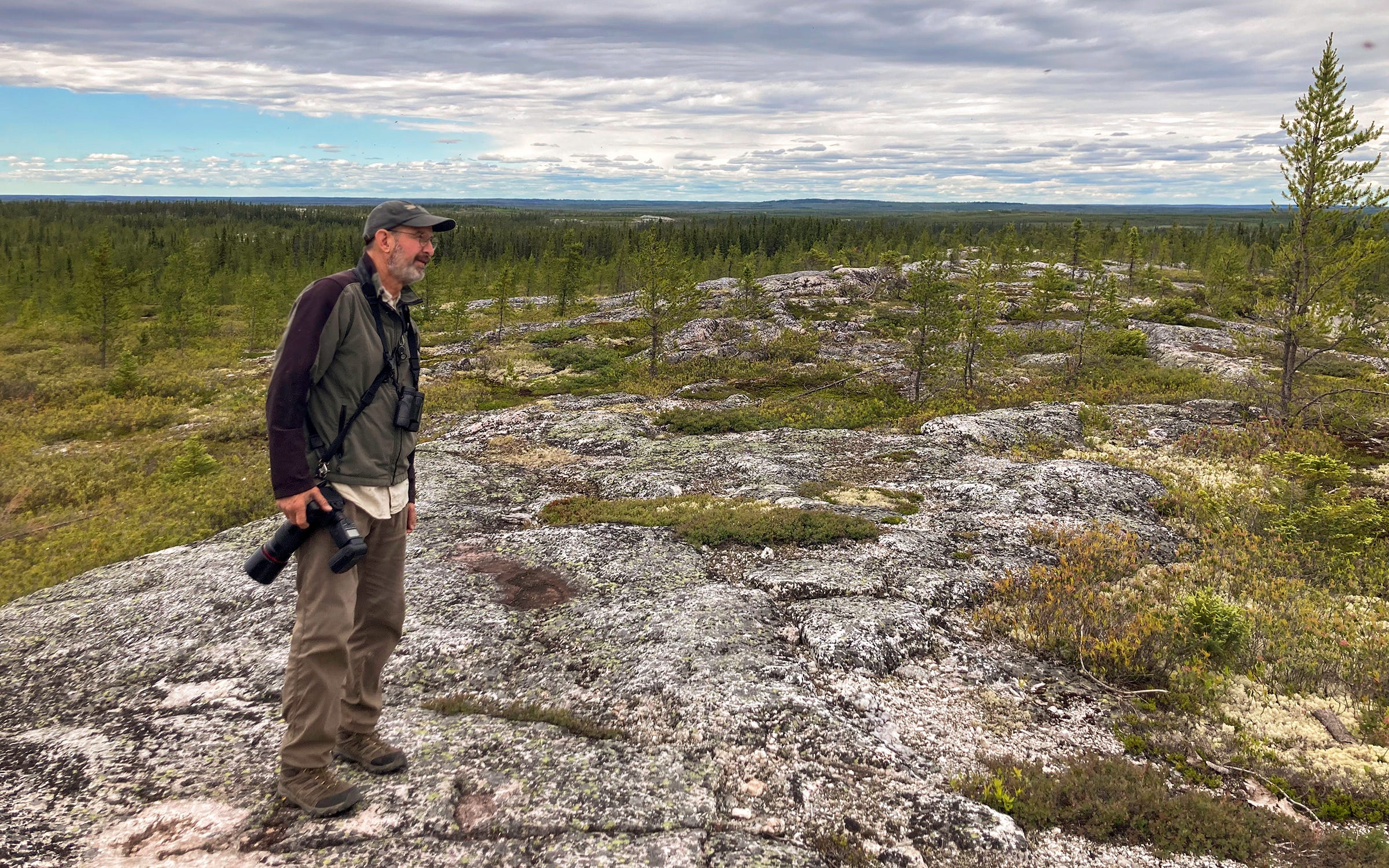
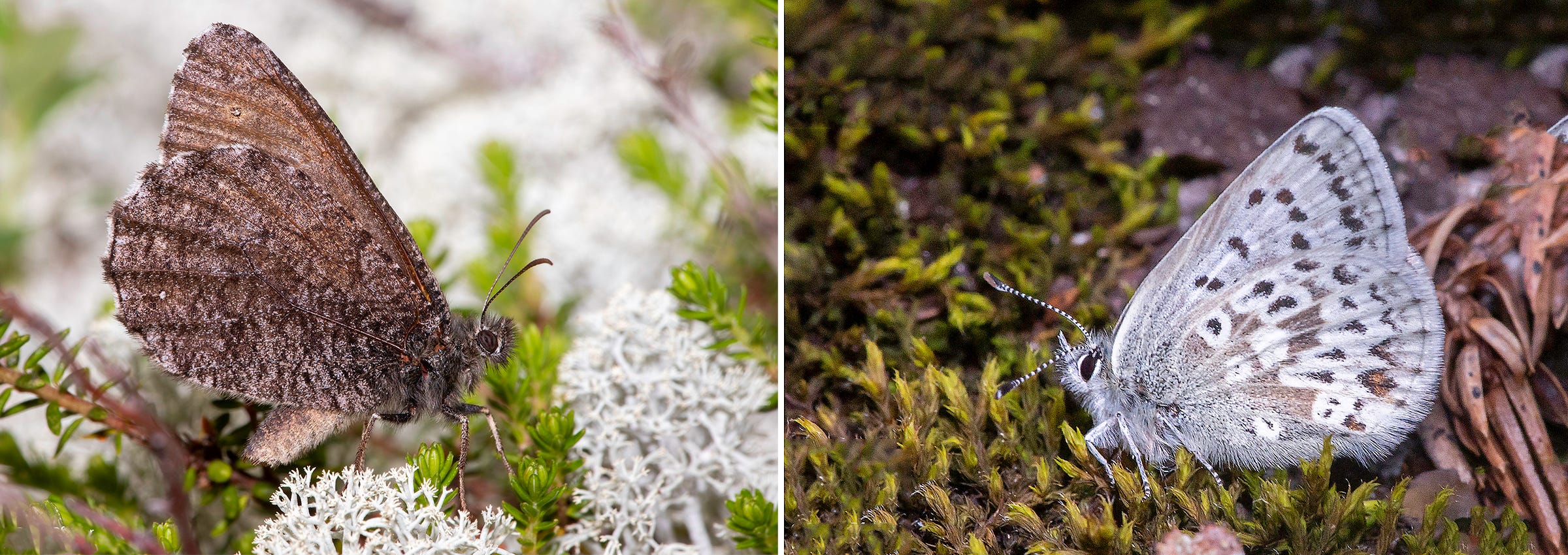
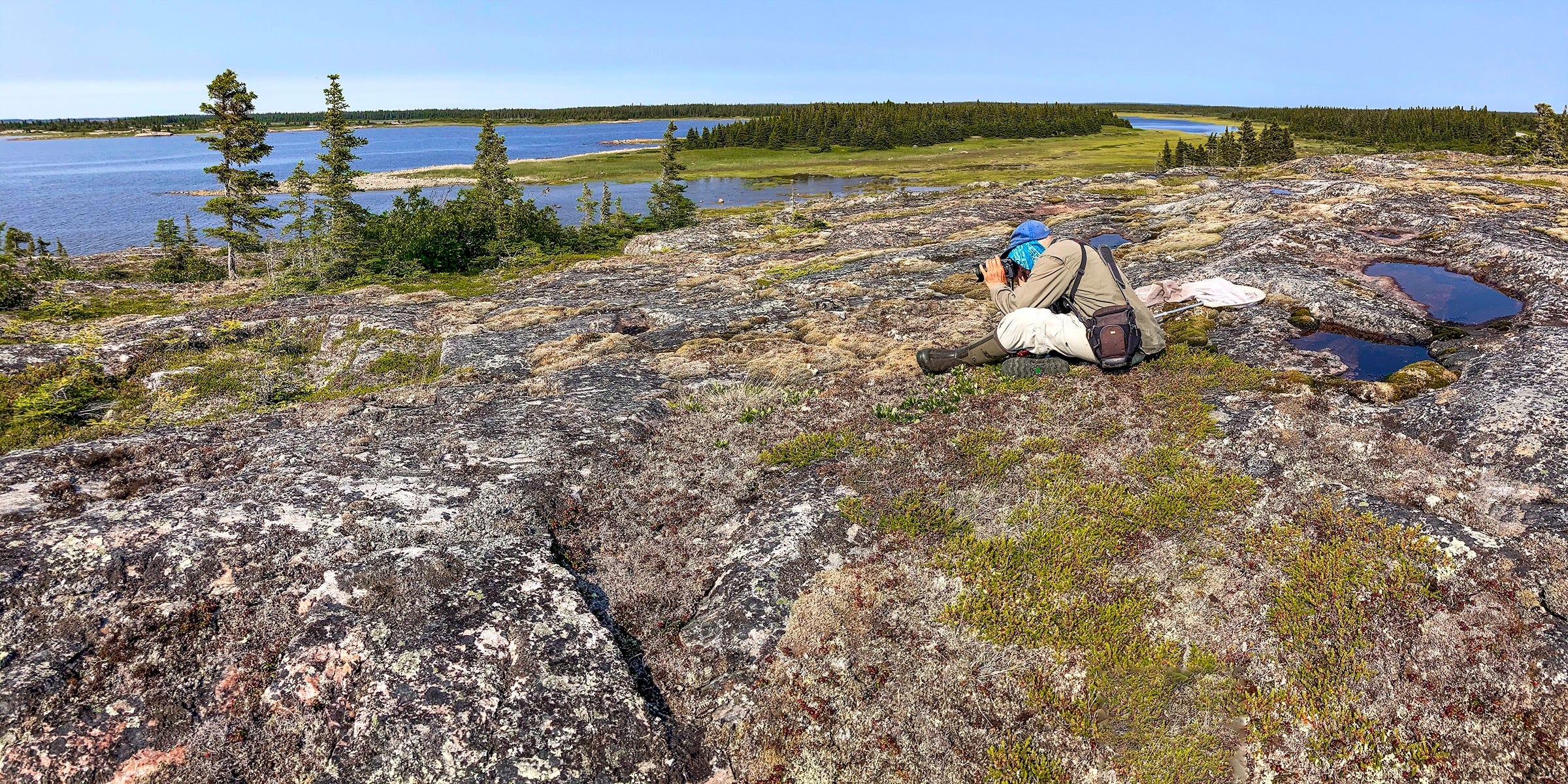
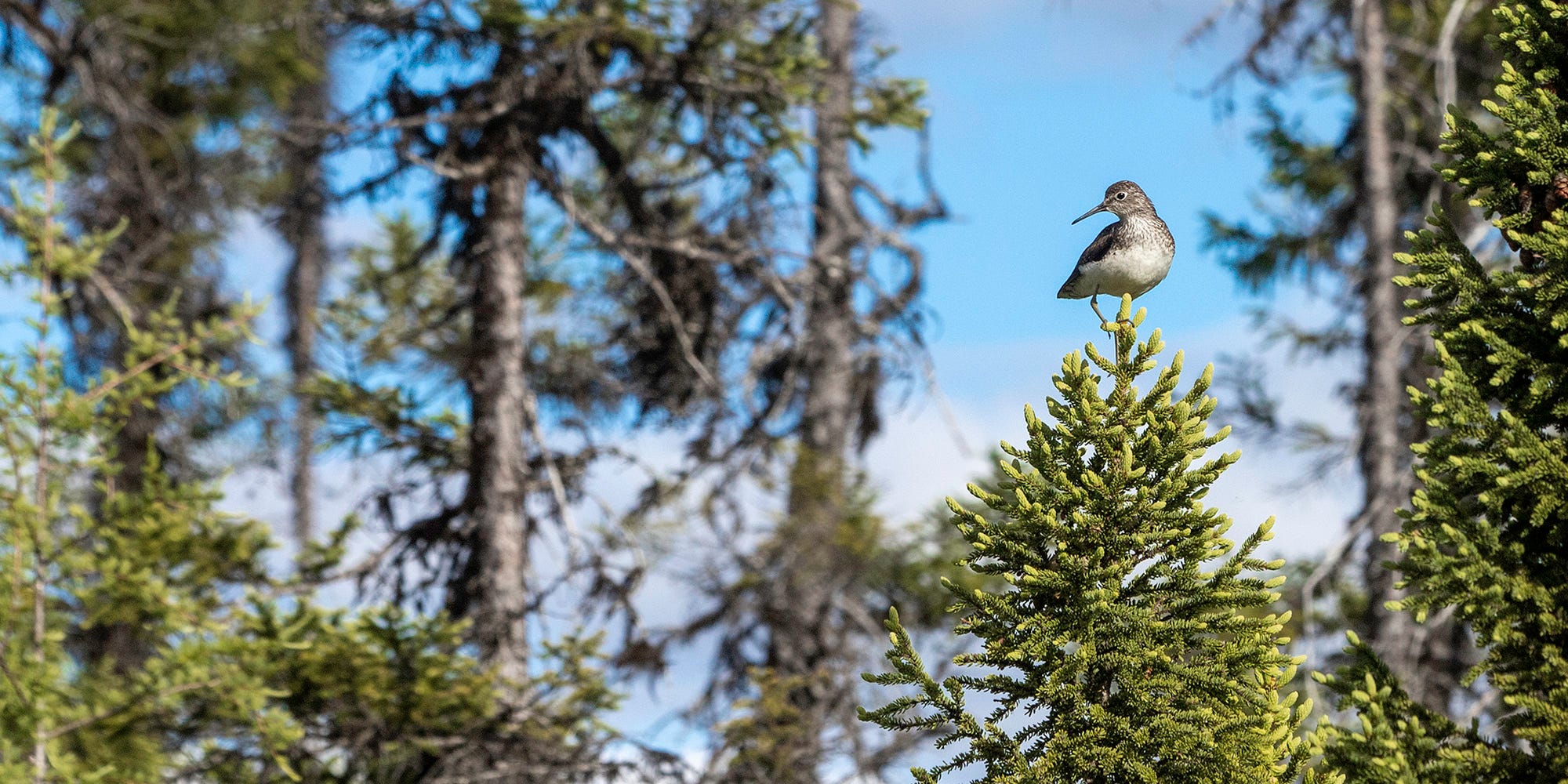

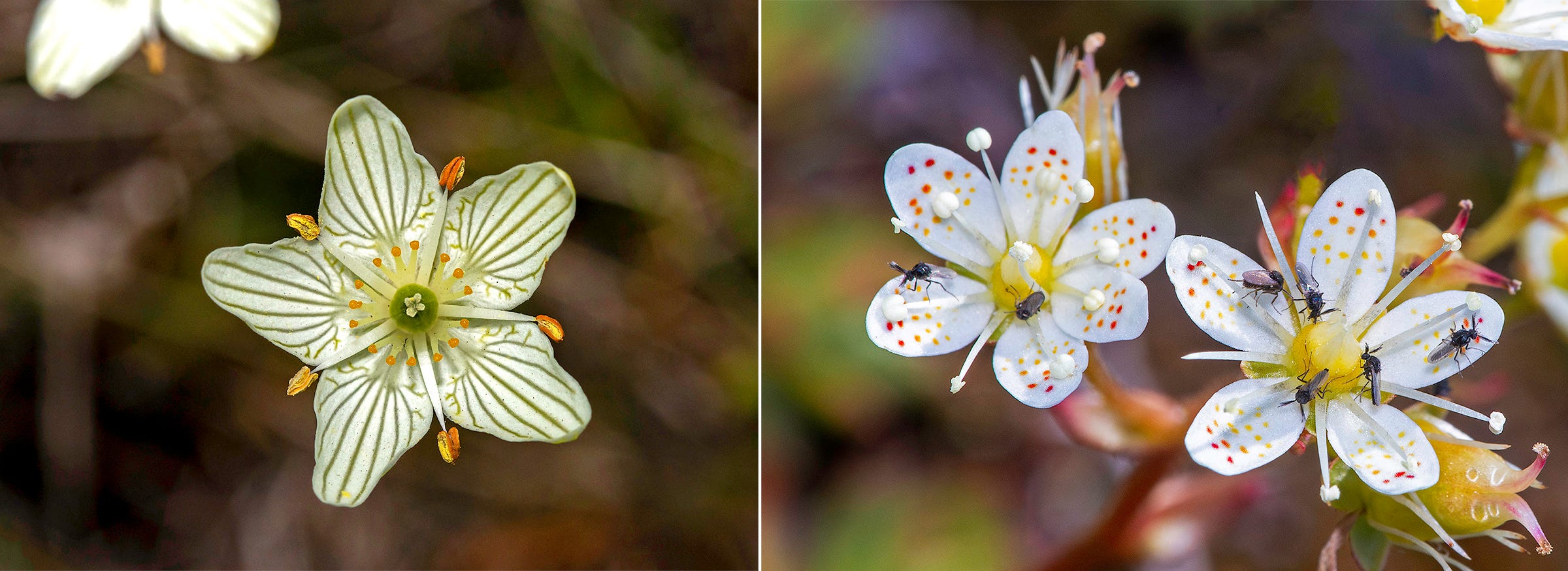
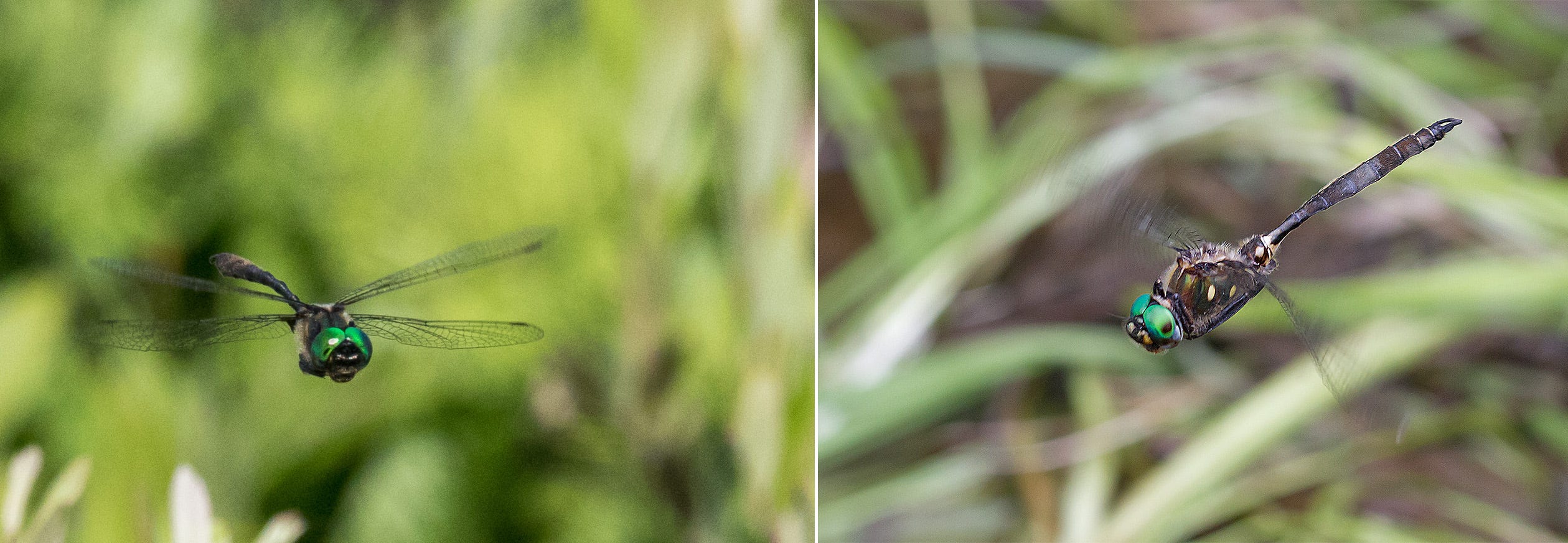
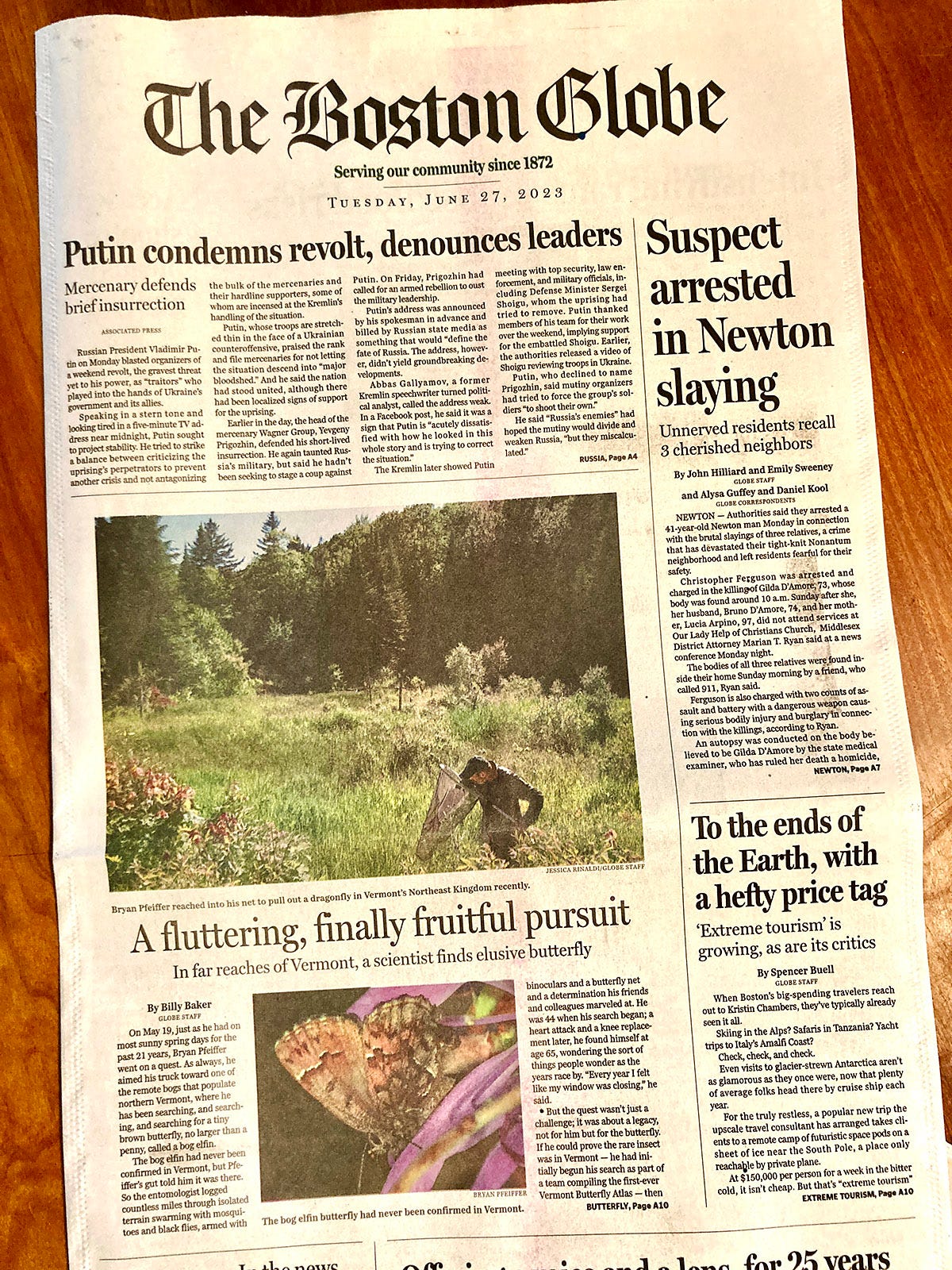
“Butterflies like these are now burning in the fires of Quebec and elsewhere across Canada. Although some of them might escape the flames, plants of course have no such recourse. “ You bring me to tears Mr. Pfeiffer...
Love reading anything you write!